By Sophia Reitz
IIM Solutions Developer at DocPoint Solutions.
Federal agencies FACE mounting pressure to modernize & increase efficiency
The following challenges were solved by a client at a federal agency when using automation to modernize their weekly reporting process.
- Budget Constraints: With tightening budgets, agencies must do more with less, driving the need for more efficient processes.
- Public Expectations: Citizens increasingly expect government services to be as user-friendly and efficient as private-sector digital services.
- Technological Advancements: The rapid pace of technological change makes existing systems obsolete quickly, necessitating regular updates.
- Cybersecurity Threats: The need to protect sensitive data from increasingly sophisticated cyber threats drives modernization efforts.
- Workforce Evolution: As younger, tech-savvy employees enter the workforce, there’s an internal push for more modern tools and processes.
- Data-Driven Decision Making: There’s a growing emphasis on using data analytics to inform policy decisions, requiring modern data management systems.
- Cross-Agency Collaboration: Better inter-agency cooperation demands more standardized and interoperable systems.
The Challenge: Traditional Reporting
The client’s previous reporting process involved a series of manual steps. First, the report coordinator sent tasks to each business unit to request content for the weekly report. There was no place to include customized instructions for each section and sub-section of the report, leading to entries in the wrong sections. In addition, not all stakeholders submitted their report content in the same format, causing confusion and additional work for the report coordinator. Stakeholders then uploaded their responses as Word documents into a centralized location. The report coordinator would then download all the files, combine them, and edit them into one final draft document. Historical report entries were not easily searchable, making repeating or referencing past entries difficult.
The ripple effects of this manual process were significant:
- Delays: When submitted reports vary in format or content, coordinators spend extra time standardizing the information, potentially delaying critical decision-making processes.
- Miscommunications: Inconsistent reporting led to misinterpretation of data.
- Policy Misalignments: Unclear instructions resulted in departments reporting on different metrics or interpreting policy requirements differently, leading to misaligned efforts across the agency.
- Resource Wastage: Time and effort spent clarifying instructions, correcting errors, and reformatting reports were a significant waste of valuable resources.
- Data Quality Issues: Inconsistent data collection methods compromised the overall quality and reliability of the agency’s data, affecting long-term analysis and planning.
The Solution: Automating Document Generation with Power Apps and Power Automate
The organization adopted Microsoft 365 (M365) tools like Power Apps and Power Automate to automate and streamline their reporting processes to address these challenges. Here’s how digitizing document generation transformed this critical business function:
Standardized Data Entry with Power Apps
With our help, the agency created two canvas applications in Power Apps, one for stakeholders to submit content for the report and another for report coordinators to manage the entries. They built a user-friendly submission app, standardizing the input format and eliminating the need for multiple templates. Customizable instructions throughout the app now guide users, ensuring the agency captures all necessary information accurately and efficiently, reducing the time spent on manual data entry. Additionally, this provided a log of all past entries for each individual, a feature not available in the previous manual method. The management app presents all the week’s entries to the report coordination team, allowing them to filter through submissions to build the week’s report with relevant content. When satisfied with the submissions, they can generate the report.
Workflows with Power Automate
Using the Word for Business connector in Power Automate, all the selected submissions can be automatically formatted and placed into the appropriate sections. The final document is stored in a SharePoint document library, providing a convenient location for the report coordination team.
Results and Benefits
After implementing the automated document generation process, the organization experienced several benefits:
- Time Savings: The agency greatly reduced the time required to collect and track submissions.
- Error Reduction: Automated workflows significantly decreased errors in data collection and document formatting.
- Improved Report Quality: Reports were consistently formatted and stored in a central location.
Digitizing the document generation process is a valuable example of how organizations can leverage M365 to drive digital transformation. Organizations can ensure their reporting processes are efficient and reliable by automating manual tasks, improving data collection, and providing consistent and accurate reports.
Contact our industry experts today to help with your migration process. Call us at 301-490-7725 or send an email to info@docpointsolutions.com

